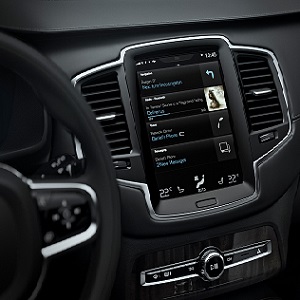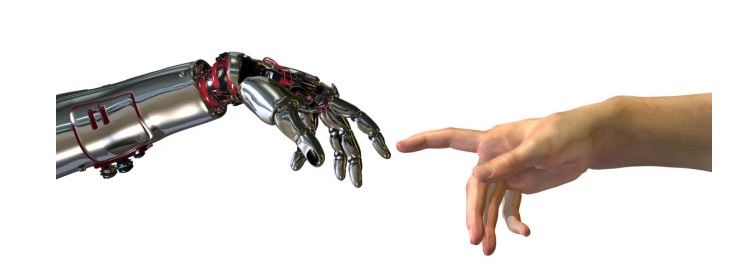Human Machine Interface: The Nerve Centre of Automobile

It is not the engine size or the horsepower anymore that makes customers decide brands of automobiles. Then one must wonder if it is the music system? Or airbags? In some parts of India, either of these could shift the preference. There is another ‘New-Norm’ catching the imagination of customers and automobile manufacturers alike. Welcome to the Digital Era of Human-Machine-Interface (HMI).
One of the first HMI we used as humans were the TV remote….. Phew, that was magic and the remote continues to create that magic in every home. A lot has been said about HMI and yet much more needs to be explored. Let’s take a step back and understand the role of HMI in the automotive industry. It stems from a fact that societal behaviors have changed and we want digital intrusion virtually in all aspects of our lives for at least 16 hours a day (the rest 8 hours we are supposed to sleep). In my opinion, a good HMI should cover these basic aspects:
- Design: It should be a simple easy-to-use experience. Ergonomically designed for a better UX. For example the tiles for each functionality should be big and across a portrait orientation as opposed to landscape. 90% of cars have a landscape orientation, this would mean wider movement of hand while driving. While driving the most important tab is researched as the navigation tab and that should be at the top.
- Interactivity: At present the touch is the most used interactivity, voice control is taking over the interaction at break-neck speeds and there was also the gesture control which in my view does not work.
- Safety: HMIs need to be least distractive in order for the driver to be alert always.
- Convergence: There is a long way to go in this area for HMI hardware. A simple thing like a google map is not yet integrated in the HMI of many cars. We are seeing this happening very recently and that is a good step.
HMI will gain even more significance if the Connected, Autonomous, Electric and Shared Mobility converge in the near future. The challenge for developers would be to keep it simple and adaptable to any Operating System. There are challenges in using Whatsapp in Android vs iOS as they are not identical interfaces (by Identical I also mean the color scheme). This is particularly important for Shared Mobility.

If one has to crystal ball gaze, there are some emerging trends that make the user’s digital interface seamless. Currently the HMI is very specific to the automobile but in this world of running against time the Automobile Interface has the potential to perform a host of features:
- Car to Manufacturer’s services:
- Book a service automatically: This is a convenient service that the owner does not have to worry about and the car books service with the owners preferred dealer and pre-fed day of the week and time. A step higher could be emailing the diagnostics of the car to the service station for faster assessment.
- Horsepower for the hilly drive: It is possible to download horsepower through the HMI connecting it with the manufacturer’s mainframe by recalibrating the ECM chip remotely.
- Exchange offer: How about the HMI sending vehicle history to the dealer or a used car dealer for selling the car and buying an upgraded version once the car reaches the mileage or age as inputted.
- Emergency Services: The HMI can be used as a hardware for automatic emergency services of notifying the ambulance and fire brigade if the airbag has deployed. The critical minutes could save lives.
- Location-based Services: This is self-explanatory and can include, refuelling, restaurants among other interests.
- In-car delivery: While the convenience of app based delivery services are integral in our lives, it also means we have to be home to accept it. The car is a great place for accepting delivery as it provides the owner the bandwidth. Volvo Cars in US tied-up with Amazon Delivery for such a service. The delivery person has a digital key that can open the boot, place the consignment safely in the car, close the boot closed and a notification goes to the owner.
- Car-to-Car Communication: There is another service Volvo Cars have introduced in Europe – Slippery Road Conditions. If a Volvo passes an icy/slippery patch of road the HMI collects the data from the wheels traction and sends it to a cloud based domain for other cars to be alerted well in advance.
As I mentioned earlier, a lot has been done but the future possibilities are endless. A trend that I forecast in the near future would be that HMIs will become standard and automobile companies would offer, an example – An android-based system or an Apple-based system to customers. I foresee this for a specific reason of standardization in a connected world and there could be a time when customers could choose brands of cars based on the experience of its Human-Machine-Interface.
Author:

Sudeep Narayan, Director, Corporate Communication, Volvo Car India. He has a vast experience in Advertising and Automotive marketing. He has executed a successful campaign for the company over the last 12 years. Prior to Volvo, he was with General Motors, and before that a successful stint in advertising with top companies that include McCann, Leo Burnett, and Enterprise Nexus.
Published in Telematics Wire



One Comment